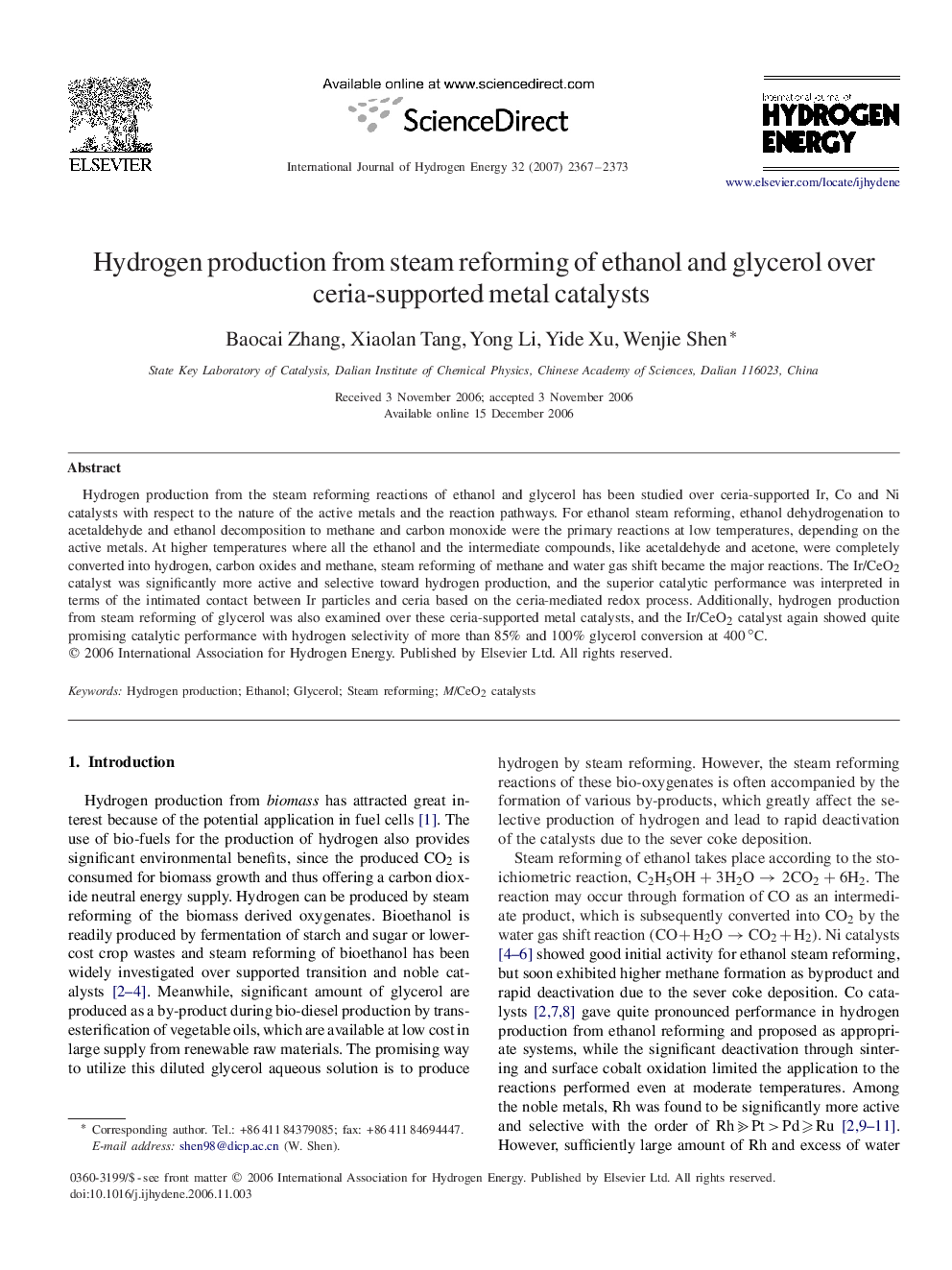| Article ID | Journal | Published Year | Pages | File Type |
|---|---|---|---|---|
| 1280340 | International Journal of Hydrogen Energy | 2007 | 7 Pages |
Hydrogen production from the steam reforming reactions of ethanol and glycerol has been studied over ceria-supported Ir, Co and Ni catalysts with respect to the nature of the active metals and the reaction pathways. For ethanol steam reforming, ethanol dehydrogenation to acetaldehyde and ethanol decomposition to methane and carbon monoxide were the primary reactions at low temperatures, depending on the active metals. At higher temperatures where all the ethanol and the intermediate compounds, like acetaldehyde and acetone, were completely converted into hydrogen, carbon oxides and methane, steam reforming of methane and water gas shift became the major reactions. The Ir/CeO2 catalyst was significantly more active and selective toward hydrogen production, and the superior catalytic performance was interpreted in terms of the intimated contact between Ir particles and ceria based on the ceria-mediated redox process. Additionally, hydrogen production from steam reforming of glycerol was also examined over these ceria-supported metal catalysts, and the Ir/CeO2 catalyst again showed quite promising catalytic performance with hydrogen selectivity of more than 85% and 100% glycerol conversion at 400∘C.
